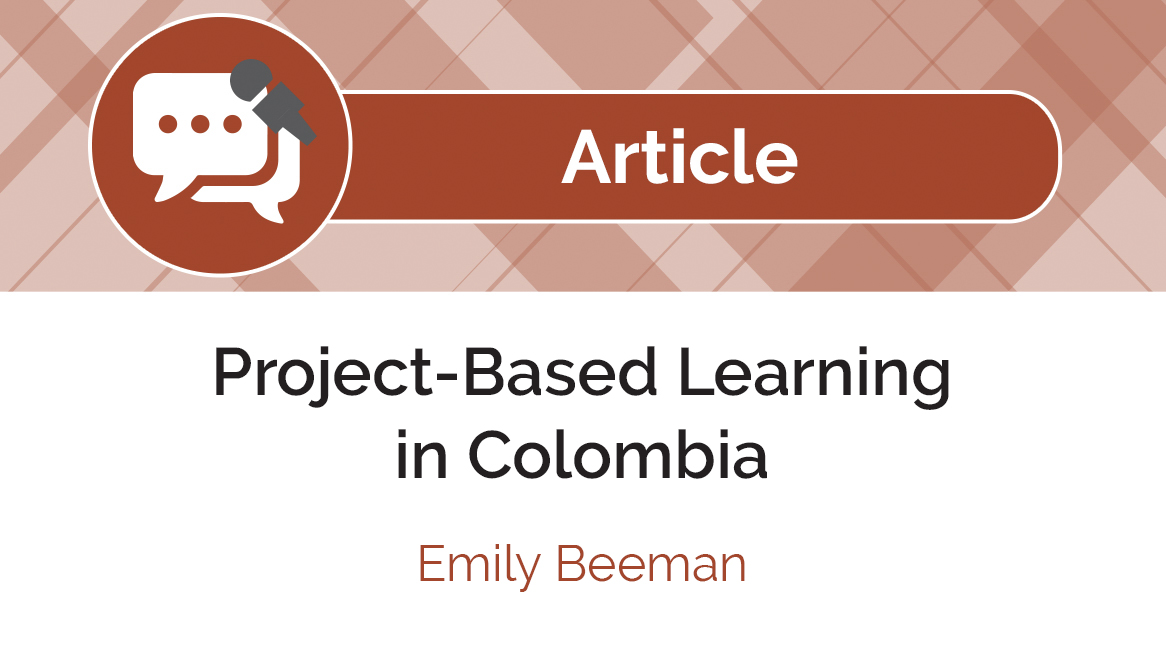Project-Based Learning in Colombia
 Emily Beeman, Spanish teacher at Pioneer Valley Regional School in Northfield, MA.
Emily Beeman, Spanish teacher at Pioneer Valley Regional School in Northfield, MA.
[Note: This article was written in November 2017]
I came to Gimnasio Los Caobos, a Project-Based Learning (PBL) school outside of Bogotá Colombia, at the end of September. I started researching this opportunity last winter when my Sabbatical year was approved. My proposal was to pursue global partnerships and explore more technology tools for my practice. I had limited knowledge of PBL and Colombia, but I found out more about Jennifer Klein, author of The Global Education Guidebook, and some dedicated people that have made a difference in this learning community, and I was hooked.
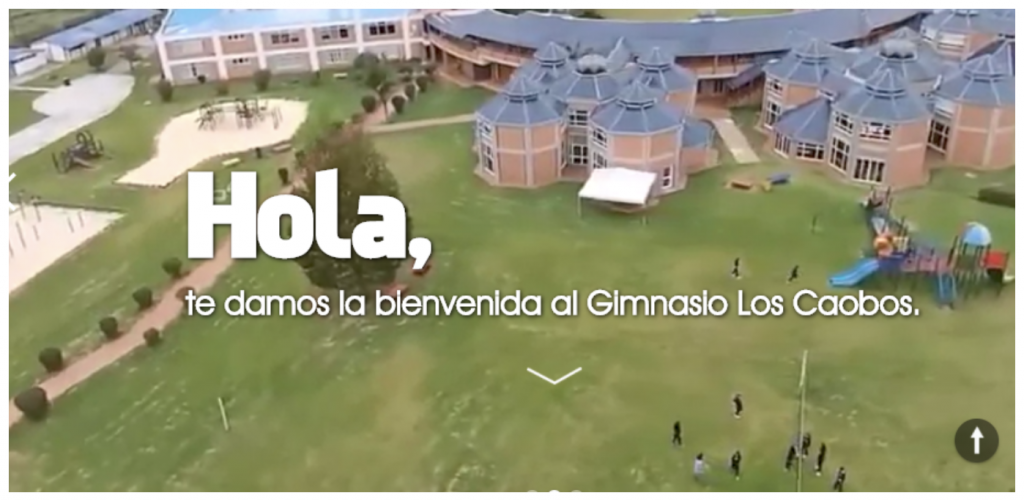
I showed this picture of the school to my students at Pioneer Valley Regional School last year and we decided that it appeared a lot like Hogwarts. In reality, the pods function like separate entities and allow students freedom within age-appropriate gatherings. Jennifer, the Gimnasio Los Caobos principal helped me understand Project-Based Learning, and she provided me with an opportunity to entrench myself in the school culture.
When I asked for Jen’s opinion about PBL at Gimnasio Los Caobos, she replied, “I believe that student-centered learning in general, and Project-Based Learning in particular, is an essential strategy for engaging students more deeply in their learning and growth. By employing student choice and encouraging students to contribute to the future of Colombia in innovative ways, we are building a culture in which we hope every graduate finds their passion and purpose.”
The classroom projects are various and the students happily share their learning. Since my arrival, I have been working with three grade levels teaching English. Many are excited to connect with me, and the classrooms are looking forward to collaborating remotely with students from my district in order to practice English and to compare cultures.
In 2nd grade, we were working on an identity project. The forty students talked to me about their interests, including of course, foods, animals, sports and hobbies. The Math and Art teachers collaborated to make this experience multi-disciplinary. Students can see how their origami, mathematical figures, artistic shapes and descriptive language interconnect. I have posted these videos on FlipGrid and in Google Classroom for students back in Massachusetts to comment, because they have been working on a similar idea.
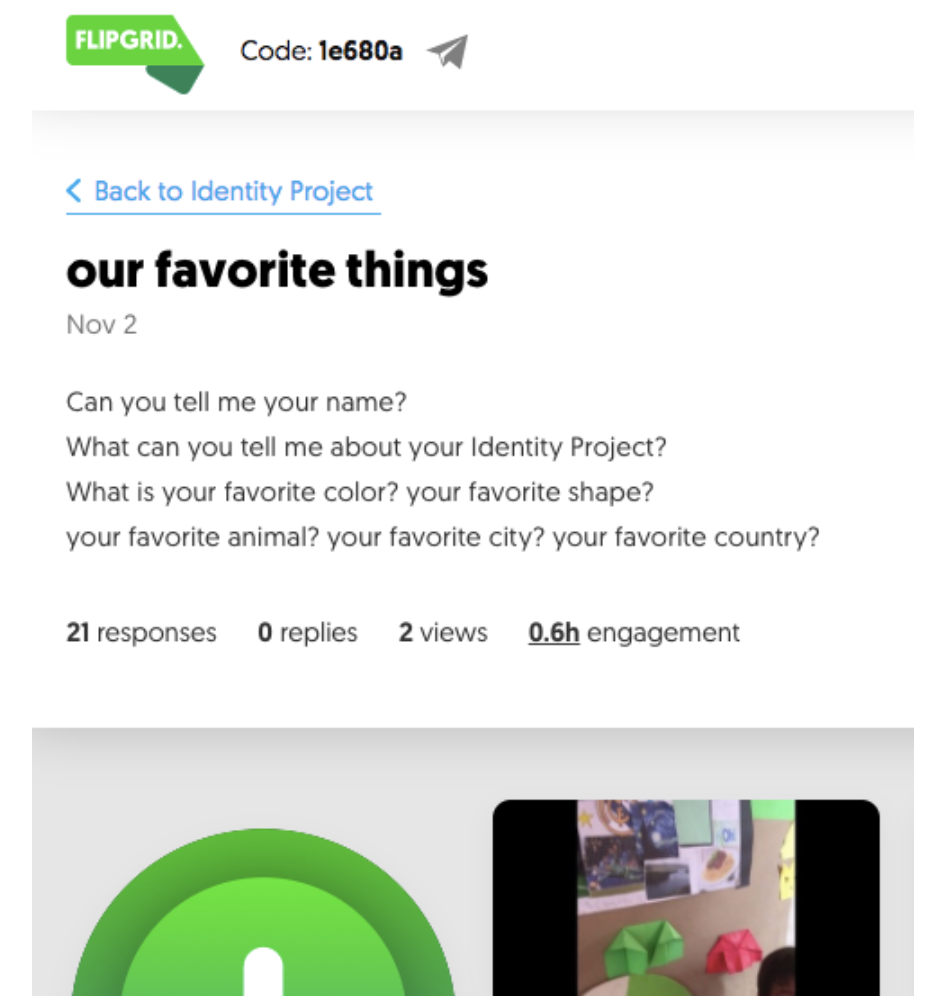
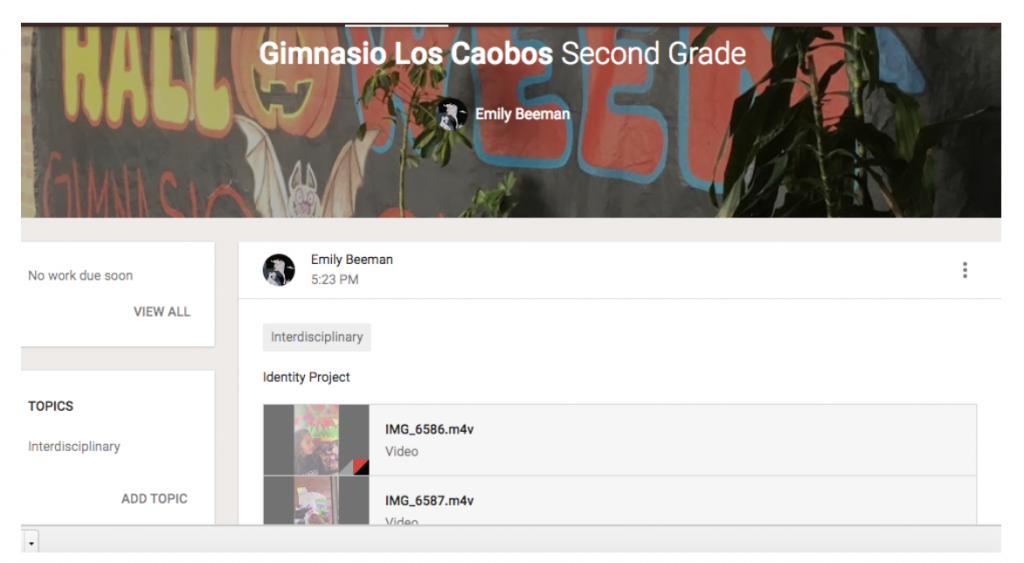

Grade 6 has been reading the Pam Muñoz Ryan novel Esperanza Rising. The story revolves around vegetables and fruits which is very appropriate for the Colombian cornucopia. Students follow Esperanza’s journey from upperclass Mexico to US immigration and finally to the life of a California migrant farmworker. We have been exploring the themes of migration, immigration, Mexican celebrations, class system, and geography. Before I left, they completed cultural mini-projects for either Quinceañera or Día de los Muertos. Their final project will be combined with Science to illustrate the nutritional benefits of a diet with a variety of fruits and vegetables.
The class of 2018 has been preparing for their comprehensive exams (IELTS). There have been a couple of projects running concurrently to improve listening, writing and speaking skills. I worked with with Angelica Niño, an 11th grade English teacher who started the project collaboration with American films to help students understand vocabulary from context. One student told me that “conversation skills (speaking and listening) are my biggest struggles.” Now, I have a few students participating in one-to-one telecollaborations with American students to help them improve their oral conversations in English.
I have learned that the most effective telecollaboration model allows students to practice with a native speaker who is trying to learn another language, because they are more likely to be sympathetic listeners and reflective conversationalists. The ACTFL Proficiency Guidelines for Speaking references understanding by “sympathetic listeners” and “sympathetic interlocutors” from the Novice to the Intermediate-Mid Levels, and I support that qualification as it is really important for Proficiency Ratings. One of my friends in Chile made me aware that the most effective growth in L2 Speaking (regardless of Proficiency Level) results from authentic conversations with native L1 speakers that subtly correct, rephrase and advise the L2 speaker. This growth is not as likely to occur when partnered for conversations with other L2 learners because the non-native listener is not likely to recast the meaning of the speaker’s conversation (Tomlinson and Masuhara, 2010).
Connecting students for communication and collaboration is essential for their growth as language learners. The PBL model is ideal because the students are engaged in discussing real world issues and creating authentic solutions. I asked Adriana Carvajalino, the Los Caobos High School Principal, for her comments. “It’s wonderful how at the end of the (Los Caobos) journey, you get to see the finished product (the student) and celebrate that they are ready for the next step. The students are prepared and they have the collaborative skills to contribute to their studies at the university. I believe that after 5 years in college, they will be able to lead our country in the progress of important projects. These kids are real human beings invested in making a difference.”
My growth from this experience in Colombia living with families, riding la ruta and working with students and teachers has been very rewarding. My original lesson plans morphed to fit the classroom expectations but many personal and PBL goals were met as I grew to understand how this construct can motivate and inspire learners. Some of my global challenges were technology-related, i.e., we had difficulty connecting because of class times and busy schedules, but students will casually communicate whenever possible if they have a relationship with someone. Helping teachers and students make global connections is the ultimate solution.
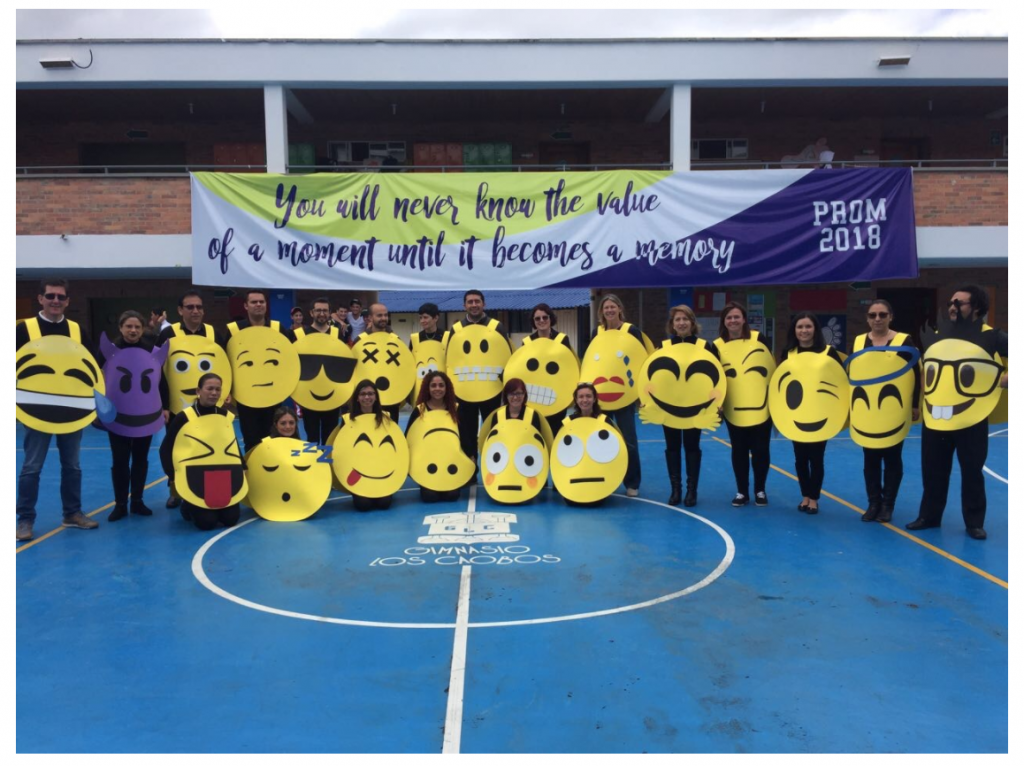
I’m excited to arrange future student and teacher exchanges and to provide opportunities for developing conversational coaching friendships. The opportunity to live the life in another place is clearly the best way to improve language skills and truly share cultures; but in my opinion, the first step is establishing an individual’s motivation through personal relationships. I plan to make these student and teacher exchanges a priority for the next five years of my teaching career.
References:
Tomlinson, B and Masuhara, H. (2011). Research for Materials Development in Language Learning: Evidence For Best Practice. Bloomsbury Academic.

